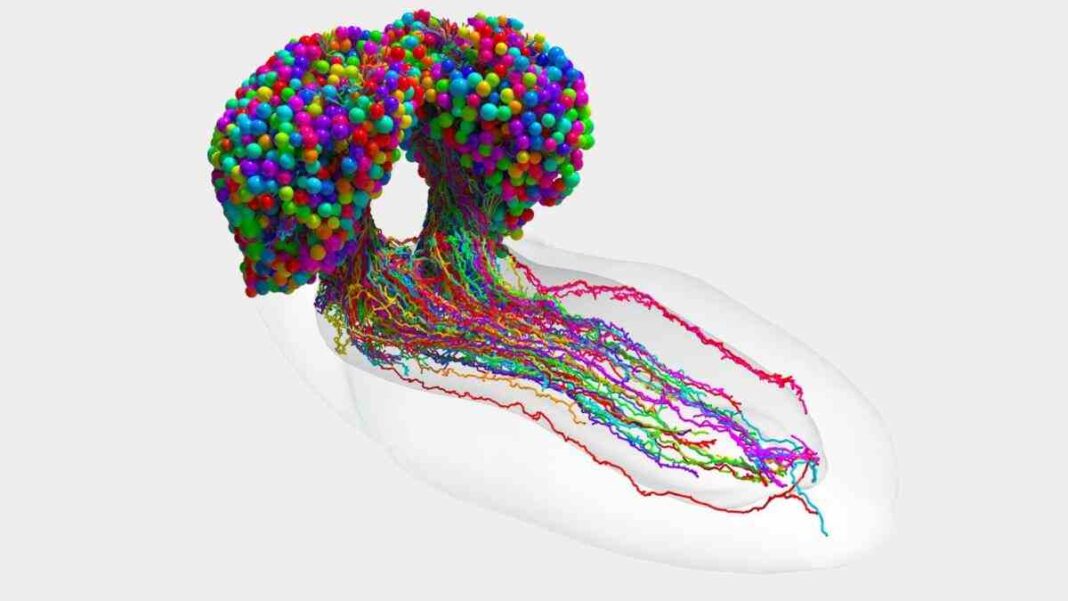UNITED STATES: Researchers from the UK, US, and Germany have accomplished a remarkable breakthrough in neuroscience by creating the first detailed map of an insect’s brain.
The team spent more than a decade studying the complex structure of a fruit fly larva’s brain. The neural diagram that they made shows every neuron and how it connects to other neurons.
This achievement is a significant step towards understanding the mechanism of thought and could help enhance future brain research by providing insights into the architecture of the brain.
Scientists have had a hard time mapping the brain because they have to cut the brain into hundreds or thousands of small pieces of tissue, which are then looked at with electron microscopes and put back together.
The research was led by Johns Hopkins University, and the team focused on the Drosophila melanogaster larva, an insect with rich learning and decision-making behaviours that share much of its fundamental biology with humans.
The researchers mapped 3,016 neurons and nearly 5,48,000 connections between them, categorizing each neuron by its role in the brain.
The team developed techniques to find groups of neurons based on shared connectivity patterns, and the brain’s busiest circuits were found to be those leading to and away from neurons in the learning centre.
Researchers found that the brain circuits of the fruit fly larva were similar to those of well-known and powerful machine learning architectures.
High-resolution images of the brain were created by researchers at Cambridge University, who manually studied them to find individual neurons.
Imaging alone took about a day per neuron, and the data was handed to Johns Hopkins researchers, who spent over three years using their original code to analyse the brain’s connectivity.
The researchers believe that their work on the fruit fly larva’s brain could have implications for the human brain’s code. They hope to understand how to write a program that leads to a human brain network.
The team’s discovery is a big step forward in brain research and opens up new ways to study the brain’s complicated structure and how it works.
Also Read: Scientists Claim That Radiation from 6G Might Actually Be Beneficial for Brain



